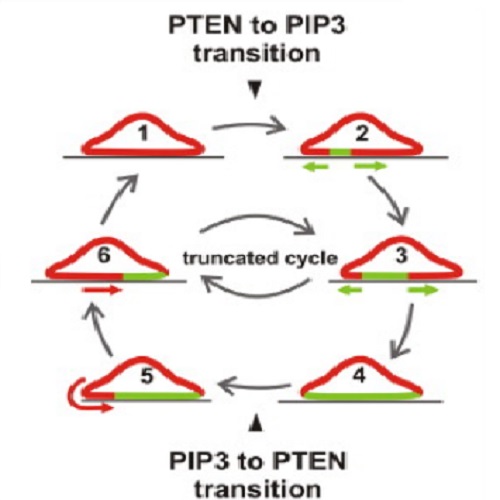PIP3 waves and PTEN dynamics in the emergence of cell polarity.
In a motile eukaryotic cell, front protrusion and tail retraction are superimposed on each other. To single out mechanisms that result in front to tail or in tail to front transition, we separated the two processes in time using cells that oscillate between a full front and a full tail state. State transitions were visualized by total internal reflection fluorescence microscopy using as a front marker PIP3 (phosphatidylinositol [3,4,5] tris-phosphate), and as a tail marker the tumor-suppressor PTEN (phosphatase tensin homolog) that degrades PIP3. Negative fluctuations in the PTEN layer of the membrane gated a local increase in PIP3. In a subset of areas lacking PTEN (PTEN holes), PIP3 was amplified until a propagated wave was initiated. Wave propagation implies that a PIP3 signal is transmitted by a self-sustained process, such that the temporal and spatial profiles of the signal are maintained during passage of the wave across the entire expanse of the cell membrane. Actin clusters were remodeled into a ring along the perimeter of the expanding PIP3 wave. The reverse transition of PIP3 to PTEN was linked to the previous site of wave initiation: where PIP3 decayed first, the entry of PTEN was primed.

- Biophys. J. 2012 Sep 19;103(6):1170-8
- 2012
- Biophysics
- 22995489
- PubMed
Enabled by:
